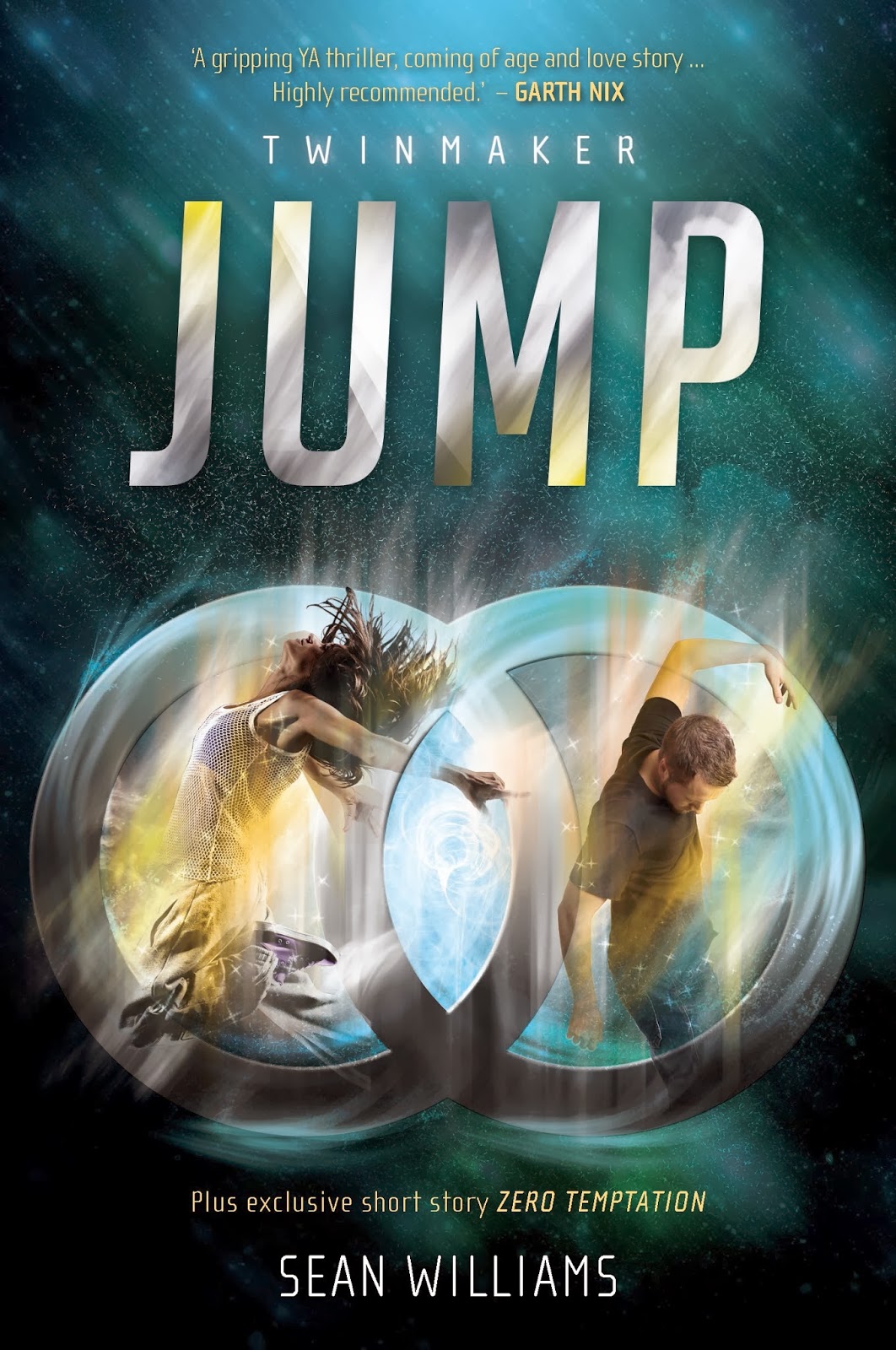Clair lives in a world revolutionised by d-mat, a global teleport system that allows people to transport themselves instantaneously around the world. When a coded note promises improvement – the chance to change your body any way you want, making it stronger, taller, more beautiful – Clair thinks it’s too good to be true, but her best friend, Libby, is determined to give it a try.One of the basic tenets of the d-mat system is conservation of information. People going in have to come out in exactly the same state. As the blurb hints, someone starts suggesting that people can "improve" themselves (get rid of an ugly birthmark or shrink a large nose) using d-mat. Obviously, this isn't the sort of thing that can end well and a lot of the plot revolves around Clair trying to save Libby after the latter attempts improvement.
What starts as Libby’s dream turns into Clair’s nightmare when Libby falls foul of a deadly trap. With the help of Jesse, the school freak, and a mysterious online friend called Q, Clair’s attempt to protect Libby leads her to an unimagined world of conspiracies and cover-ups. Soon her own life is at risk, and Clair is chased across the world in a desperate race against time.
The main strength of Jump is the worldbuilding. It doesn't come as a surprise, since Williams has written many a hard science fiction novel in the past, but the worldbuilding is rigorous and well thought-out. For example, in a post-scarcity society, why isn't overpopulation a problem? Well, it's not directly addressed but the Water Wars, fought over rising sea levels a generation ago, would contribute to a lowered present population. The rules governing d-mat are explained in a clear (albeit mostly metaphoric) manner so that it's easy to follow the parts of the plot which hinge upon them. It makes for an engaging story which doesn't get bogged down in technical details.
As someone who has read a lot of science fiction in the past, there was one aspect of the plot which came with a later reveal that struck me as obvious from the get-go. Although the reveal was done quite well and was not in anyway frustrating, even though I saw it coming. On the other hand, I suspect less experienced readers (for example teenagers who haven't been exposed to as much science fiction) would not necessarily see that aspect as obvious like I did. And of course this paragraph is a bit ambiguous because spoilers. But it had to be said.
I enjoyed reading about Clair and her plight. When thrown into a shitty situation she quickly steps up to the challenge — sometimes without necessarily realising that she's doing so — and propels the story forwards. Williams doesn't pull any punches as to the sorts of situations she finds herself in either.
Also, given that it's trivial to travel around the world, the main cast is pleasingly diverse. Clair is black, Zep is Asian, Libby lives in Scandinavia and Jesse is a white American. I'm pretty sure that's meant to be Clair and Jesse on the cover, although I'm not sure Clair wore anything like that for most of the story.
Jump was an enjoyable read from a writer whose work I've enjoyed in the past (albeit pre-blog, so there's less evidence ;-p ). I am looking forward to reading the sequel, which I hope won't be too long coming (pretty sure the release is some time in 2014, just not sure when). I recommend it to fans of science fiction and to fans of YA looking for something a bit meatier than most YA SF.
4.5 / 5 stars
First published: November 2013, Allen & Unwin (AU version)
Series: Twinmaker book 1 of 3
Format read: Paper!
Source: Won in a competition hosted on Vegan YA Nerds
Challenges: Australian Science Fiction Reading Challenge



No comments:
Post a Comment
Note: only a member of this blog may post a comment.